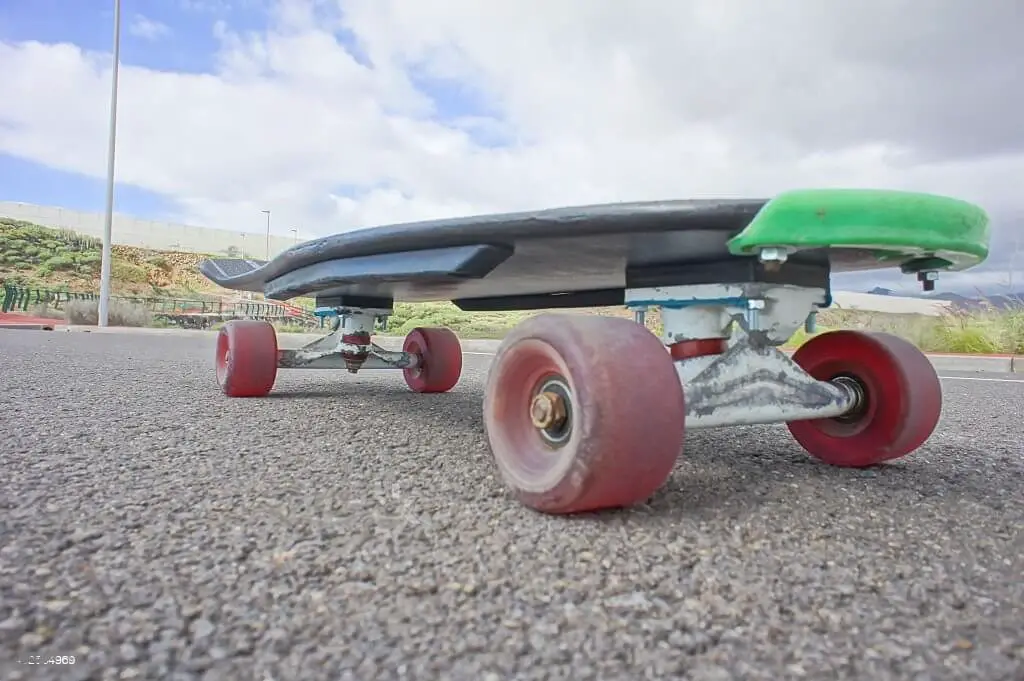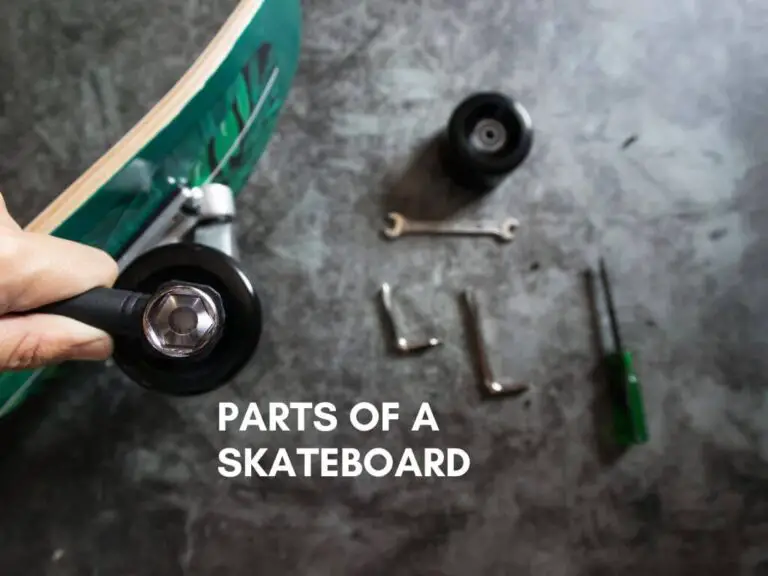Skateboard wheels are an essential part of your setup, and choosing the right ones can make a big difference in your ride. The wrong wheels can make it difficult to control your board, accelerate, or grind. But with so many different sizes, shapes, and hardnesses to choose from, it can be tough to know where to start.
How to Measure Skateboard Wheels for the Perfect Ride? In this blog post, we’ll teach you how to measure skateboard wheels and choose the perfect set for your riding style and terrain. We’ll cover the following topics:
What are skateboard wheels and why is it important to measure them correctly?
Skateboard wheels are the round parts of a skateboard that come into contact with the ground. They are made of urethane, a type of plastic that is both durable and resilient. Skateboard wheels come in a variety of sizes and hardnesses, which affect the way the board rides.
It is important to measure skateboard wheels correctly because the size and hardness of the wheels can affect the overall performance of the skateboard. For example, larger wheels are better for rough terrain, while smaller wheels are better for smooth terrain. Harder wheels are faster and more durable, but they can also be more slippery.
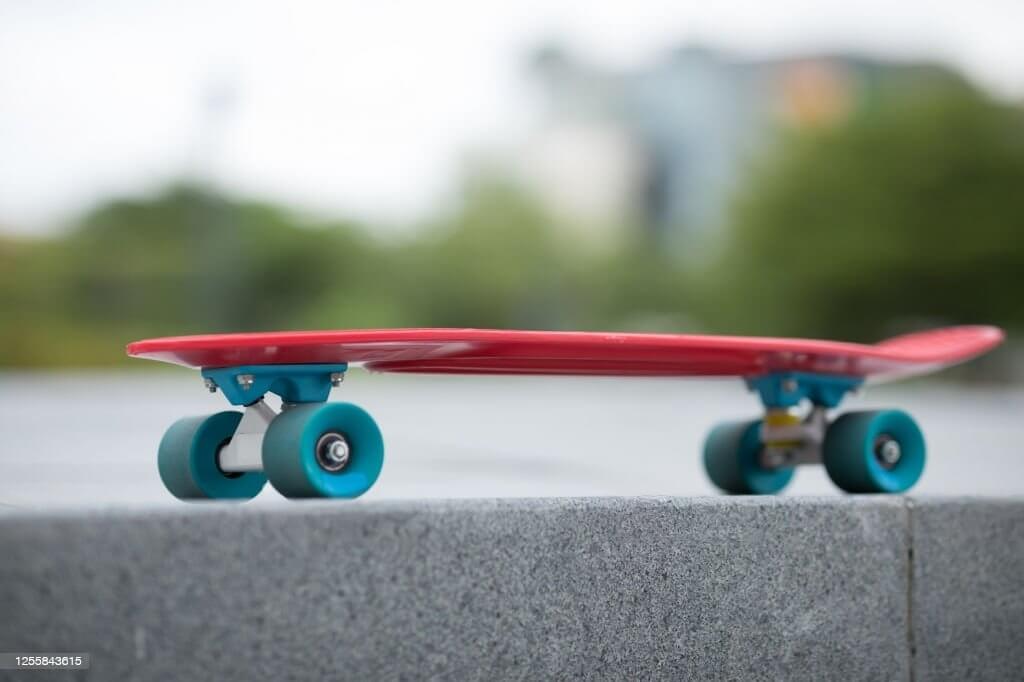
Different parts of a skateboard wheel
The different parts of a skateboard wheel include:
- Diameter: The diameter of the wheel is measured in millimeters. Larger wheels are faster and better for rough terrain, while smaller wheels are slower and better for smooth terrain.
- Hardness: The hardness of the wheel is measured on the durometer scale, with higher numbers indicating harder wheels. Harder wheels are faster and more durable, but they can also be more slippery.
- Contact patch: The contact patch is the part of the wheel that comes into contact with the ground. A larger contact patch provides more stability and traction, while a smaller contact patch provides more agility and speed.
- Lip profile: The lip profile is the shape of the edge of the wheel. A round lip profile is more forgiving and easier to slide, while a sharp lip profile is more grippy and better for grinds.
Why it’s important to choose the right wheel size and hardness for your riding style and the terrain you’ll be skating on
The right wheel size and hardness will depend on your riding style and the terrain you’ll be skating on. For example, if you’re a street skater, you’ll want smaller, harder wheels that are good for grinds and slides. If you’re a park skater, you’ll want larger, softer wheels that are good for absorbing impact and maintaining speed.
Here is a general guide to choosing the right wheel size and hardness:
- Wheel size:
- Street skating: 52-54mm
- Park skating: 56-58mm
- All-around skating: 54-56mm
- Wheel hardness:
- Street skating: 99A-101A
- Park skating: 95A-97A
- All-around skating: 97A-99A
Of course, these are just general guidelines. The best way to find the right wheel size and hardness for you is to experiment and see what works best for your riding style and the terrain you’ll be skating on.
How to measure skateboard wheel diameter using a ruler
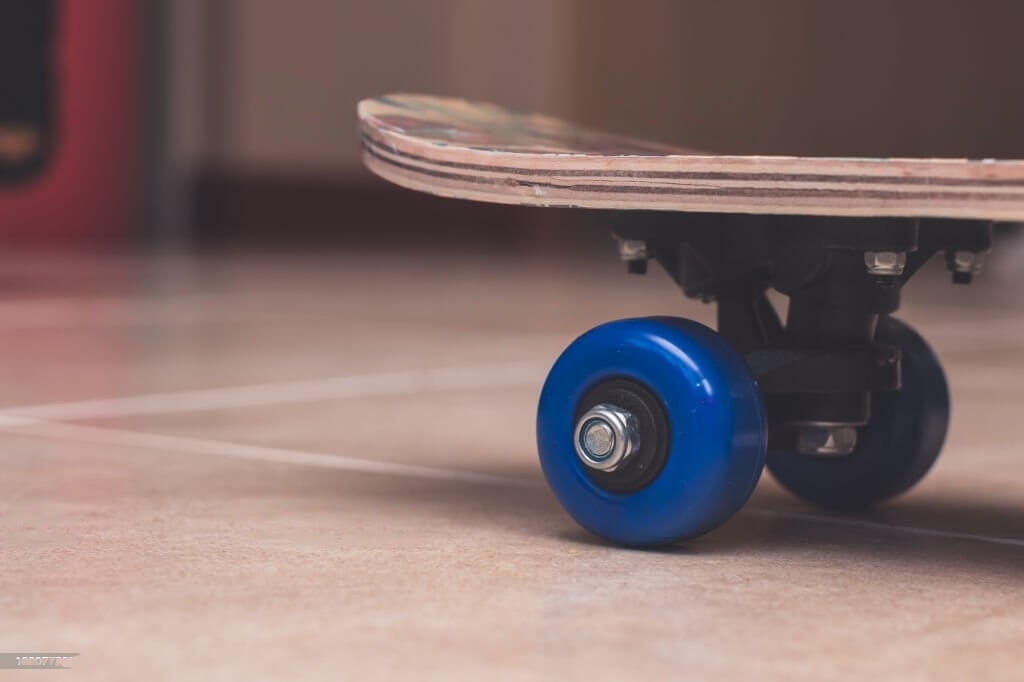
Skateboard wheel diameter is one of the most important factors to consider when choosing skateboard wheels. It affects the speed, acceleration, and handling of your skateboard. The larger the wheel diameter, the faster and more stable your skateboard will be. However, larger wheels can also be heavier and more difficult to control.
To measure the diameter of a skateboard wheel using a ruler, follow these steps:
- Place the skateboard wheel on a flat surface.
- Place the ruler across the wheel so that the 0-inch mark is at the center of the wheel.
- Measure the distance from the 0-inch mark to the edge of the wheel. This is the radius of the wheel.
- To get the diameter of the wheel, multiply the radius by 2.
For example, if you measure a radius of 2.5 inches, the diameter of the wheel would be 5 inches.
Here is a diagram to help you visualize the steps:
[Diagram of how to measure skateboard wheel diameter using a ruler]
How to Measure Skateboard Wheels? Tips for measuring skateboard wheel diameter
- Make sure that the skateboard wheel is on a flat surface. This will ensure that you get an accurate measurement.
- Use a straight ruler. A curved ruler will not give you an accurate measurement.
- Place the ruler across the wheel so that the 0-inch mark is at the center of the wheel. This will ensure that you are measuring the diameter of the wheel, not the radius.
- Measure the distance from the 0-inch mark to the edge of the wheel. This is the radius of the wheel.
- To get the diameter of the wheel, multiply the radius by 2.
Why is it important to measure skateboard wheel diameter?
Skateboard wheel diameter is one of the most important factors to consider when choosing skateboard wheels. It affects the speed, acceleration, and handling of your skateboard.
- Speed: Larger wheels roll faster than smaller wheels. This is because they have more surface area to make contact with the ground.
- Acceleration: Larger wheels accelerate faster than smaller wheels. This is because they have more inertia.
- Handling: Larger wheels are more stable than smaller wheels. This is because they have a lower center of gravity.
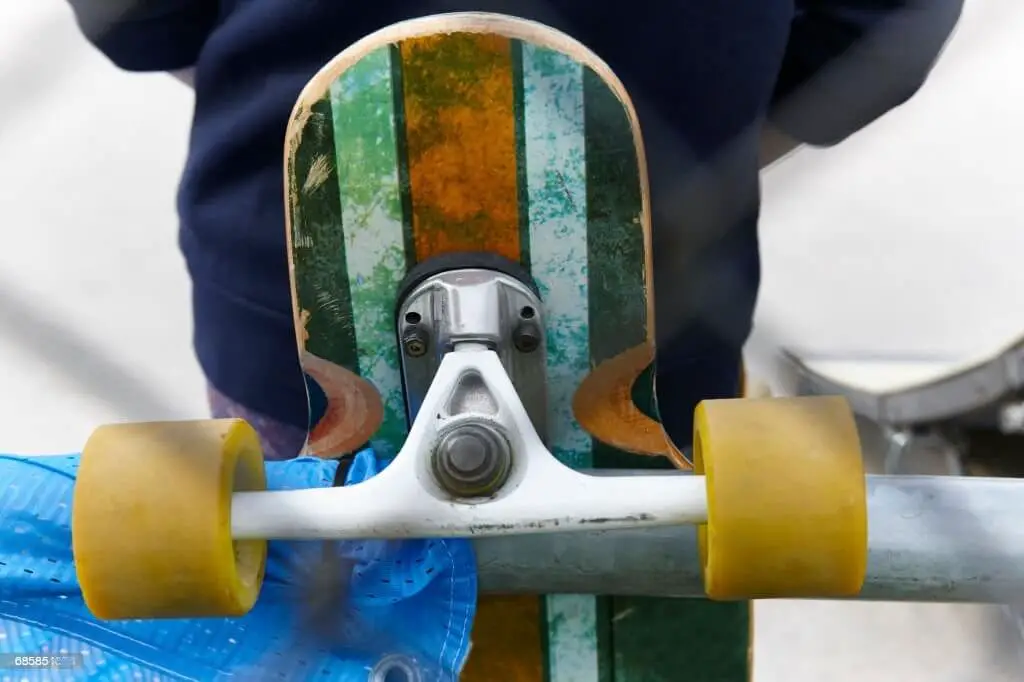
How to Choose the Right Skateboard Wheel Diameter
Skateboard wheel diameter is one of the most important factors to consider when choosing a new set of wheels. The size of your wheels will affect your ride speed, stability, pop, and trick potential. It’s important to choose the right wheel diameter for your riding style and terrain.
Factors that Affect Skateboard Wheel Diameter
- Riding style: Different riding styles require different wheel diameters. For example, street skaters typically prefer smaller wheels (52-56mm) because they are lighter and more responsive. Vert skaters, on the other hand, prefer larger wheels (58-60mm) because they provide more stability and speed.
- Terrain: The terrain you skate on will also affect your wheel diameter selection. If you skate on rough terrain, you’ll want larger wheels to help you roll over bumps and cracks. If you skate on smooth terrain, you can get away with smaller wheels.
- Personal preference: Ultimately, the best way to choose the right skateboard wheel diameter is to experiment and find what you like best. Some skaters prefer smaller wheels, while others prefer larger wheels. There is no right or wrong answer.
Recommended Wheel Diameters for Different Riding Styles and Terrains
| Riding style | Wheel diameter |
|---|---|
| Street | 52-56mm |
| Vert | 58-60mm |
| Transition | 54-58mm |
| Cruising | 56-60mm |
| Commuting | 58-60mm |
| Terrain | Wheel diameter |
|---|---|
| Rough | 58-60mm |
| Smooth | 52-56mm |
Tips for Choosing the Right Skateboard Wheel Diameter
- If you’re new to skateboarding, start with a smaller wheel diameter. Smaller wheels are easier to control and learn tricks on.
- If you’re not sure what wheel diameter to choose, talk to your local skate shop. They can help you choose the right wheels for your riding style and terrain.
- Don’t be afraid to experiment with different wheel diameters. The best way to find what you like best is to try different things.
Here is a table of recommended wheel diameters for different riding styles and terrains:
| Riding style | Terrain | Wheel diameter (mm) |
|---|---|---|
| Street | Smooth | 52-54 |
| Street | Rough | 54-56 |
| Vert | Smooth | 58-60 |
| Vert | Rough | 58-60 |
| Transition | Smooth | 54-56 |
| Transition | Rough | 56-58 |
| Cruising | Smooth | 56-58 |
| Cruising | Rough | 58-60 |
| Commuting | Smooth | 58-60 |
| Commuting | Rough | 58-60 |
Keep in mind that these are just recommendations. The best wheel diameter for you will depend on your personal preferences. Experiment with different sizes and see what feels best.
How to measure skateboard wheel hardness using a durometer
Skateboard wheel hardness is measured using a durometer, which is a device that measures the indentation resistance of a material. The most common durometer scale used for skateboard wheels is the Shore A scale, which ranges from 75A (softest) to 101A (hardest).
To measure the hardness of a skateboard wheel using a durometer, follow these steps:
- Place the wheel on a flat, hard surface.
- Position the durometer so that the indenter is centered on the wheel’s surface.
- Apply pressure to the durometer until the indenter stops moving.
- Read the hardness value from the durometer dial.
It is important to note that durometer readings can vary depending on the temperature and humidity of the environment. For the most accurate results, it is best to measure wheel hardness at room temperature (70°F).
Here are some tips for measuring skateboard wheel hardness:
- Use a high-quality durometer that is specifically designed for measuring the hardness of skateboard wheels.
- Make sure that the wheel is clean and free of dirt or debris.
- Apply pressure to the durometer slowly and evenly.
- Take multiple readings from different areas of the wheel to get an average hardness value.
Understanding skateboard wheel hardness
Skateboard wheel hardness has a significant impact on the performance of the wheel. Softer wheels are more grippy and provide a smoother ride, but they are also more likely to flatspot. Harder wheels are less grippy, but they are also more durable and faster rolling.
The best skateboard wheel hardness for you will depend on your riding style and the type of terrain you skate on. If you are a beginner, it is recommended to start with softer wheels. As you become more experienced, you can experiment with harder wheels to find what works best for you.
Here is a general guide to skateboard wheel hardness:
- Soft wheels (75A-87A): Good for beginners, cruising, and skating on rough terrain.
- Medium wheels (88A-95A): Good for all-around skating, including street skating, park skating, and vert skating.
- Hard wheels (96A-101A): Good for fast skating, sliding, and tricks.
It is important to note that this is just a general guide. The best way to find the right skateboard wheel hardness for you is to experiment with different wheels and see what works best.
How to choose the right skateboard wheel hardness
Skateboard wheel hardness is one of the most important factors to consider when choosing a new set of wheels. It can have a big impact on your ride quality, performance, and durability.
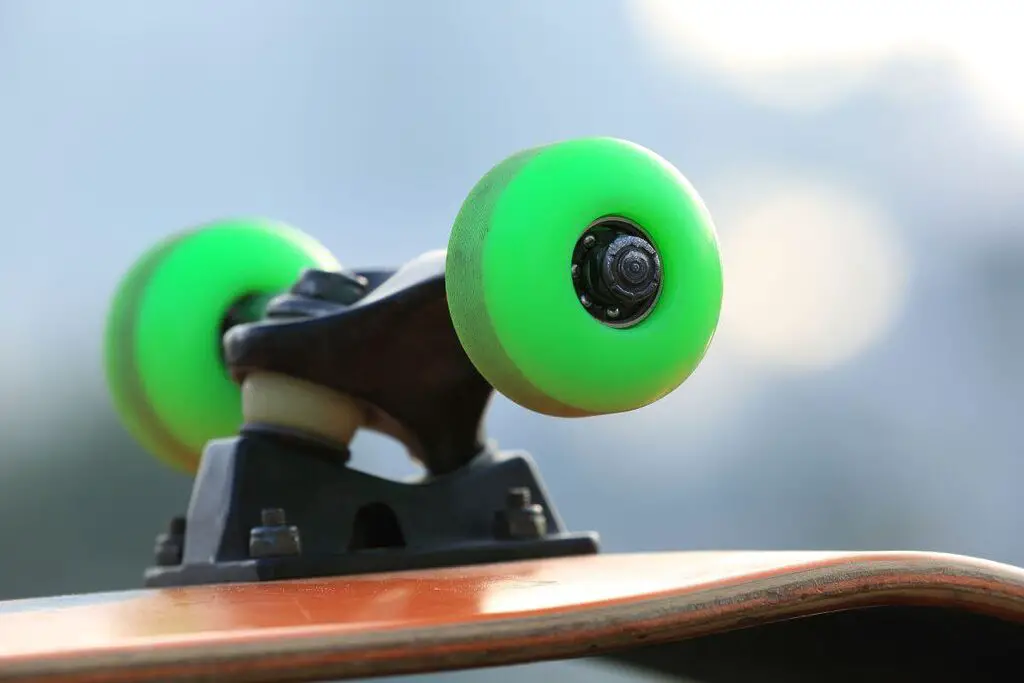
Factors that Affect Skateboard Wheel Hardness
When choosing skateboard wheels, it is important to consider the following factors:
- Riding style: What type of skateboarding do you enjoy? Street skating, park skating, cruising, or a mix of all three? Different riding styles require different wheel hardnesses.
- Terrain: What type of surfaces will you be skating on? Smooth concrete, rough asphalt, or a mix of both? The hardness of your wheels will affect how they perform on different types of terrain.
- Personal preference: Some skaters prefer the feel of softer wheels, while others prefer the feel of harder wheels. Ultimately, it is up to you to decide which wheel hardness you prefer.
Recommended Wheel Hardnesses for Different Riding Styles and Terrains
Here is a table of recommended wheel hardnesses for different riding styles and terrains:
| Riding Style | Terrain | Recommended Wheel Hardness (Durometer) |
|---|---|---|
| Street skating | Smooth concrete | 95a-101a |
| Park skating | Smooth concrete | 92a-99a |
| Cruising | Mix of smooth and rough surfaces | 83a-92a |
| Commuting | Mix of smooth and rough surfaces | 78a-87a |
| Longboarding | Mix of smooth and rough surfaces | 75a-85a |
How Wheel Hardness Affects Performance
Softer wheels are more grippy and provide a smoother ride, but they are also less durable and can slow you down. Harder wheels are faster and more durable, but they can be less grippy and provide a rougher ride.
Here is a more detailed breakdown of how wheel hardness affects performance:
- Grip: Softer wheels have more grip, which makes them ideal for street skating and park skating, where you need to be able to lock into grinds and slides. Harder wheels have less grip, which makes them ideal for cruising and commuting, where you want to be able to roll quickly and efficiently.
- Speed: Harder wheels roll faster than softer wheels. This is because harder wheels have less resistance to friction. If you are looking for the fastest possible ride, you will want to choose harder wheels.
- Durability: Harder wheels are more durable than softer wheels. This is because harder wheels are less likely to deform or chip. If you are looking for wheels that will last a long time, you will want to choose harder wheels.
- Ride quality: Softer wheels provide a smoother ride than harder wheels. This is because softer wheels are better at absorbing bumps and vibrations. If you are looking for the smoothest possible ride, you will want to choose softer wheels.
When choosing skateboard wheels, it is important to consider your riding style, terrain, and personal preference. Consider the factors discussed in this article to choose the right wheel hardness for you.
Final Thought
Skateboard wheel diameter and durometer are the two most important factors to consider when choosing the perfect wheels for your ride. Smaller wheels are lighter and more responsive, making them ideal for technical skating and flipping tricks. Larger wheels are heavier but faster, and they roll over rough surfaces better. Harder wheels are faster and more durable, but they can be less grippy and more uncomfortable to ride on rough surfaces. Softer wheels are grippier and more comfortable, but they wear down faster and can be slower.
The best way to choose the perfect wheels for your skateboarding style and terrain is to experiment with different sizes and durometers. If you’re not sure where to start, ask a local skate shop for recommendations.
FAQ’s
How do you know what size your skateboard wheels are?
To determine your skateboard wheel size, check the packaging or sidewall for printed dimensions in millimeters. Measure the diameter using a ruler or calipers by placing the wheel on a flat surface and measuring from edge to edge. You can also consult the manufacturer’s website or skateboarding communities for information. Wheel sizes typically range from 48mm to 60mm+. Choose smaller wheels (48mm – 54mm) for technical tricks, medium wheels (55mm – 57mm) for all-around skating, and larger wheels (58mm – 60mm+) for cruising and vert skating.
Are 52mm wheels too small?
No, 52mm wheels are not too small. They are a popular choice for street and technical skating. Their smaller size offers quicker acceleration and improved maneuverability, making them ideal for tricks, flips, and urban environments. However, wheel size preference depends on your skating style and personal comfort. If you’re into fast cruising or tackling rough terrains, larger wheels might be more suitable.
What does 99D mean on skateboard wheels?
The “99D” on skateboard wheels refers to the durometer rating, which measures the hardness of the wheels. Durometer ratings typically range from 1 to 100, with higher numbers indicating harder wheels. A rating of “99D” suggests that the wheels are quite hard, making them suitable for smooth surfaces and high speeds. Harder wheels offer less grip but provide better slide control for technical tricks and park skating. Softer wheels (lower durometer ratings) are better for rough terrain and offer more grip.
What does 101A mean on skateboard wheels?
The “101A” on skateboard wheels indicates the durometer rating, measuring the wheel’s hardness. Durometer ratings range from 1 to 100, with higher numbers indicating harder wheels. A “101A” rating signifies an extremely hard wheel, suitable for smooth surfaces and high speeds. These wheels offer minimal grip but excel in slide control for technical tricks and park skating. Softer wheels (lower durometer) provide better grip and are ideal for rough terrain.

